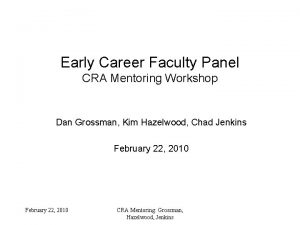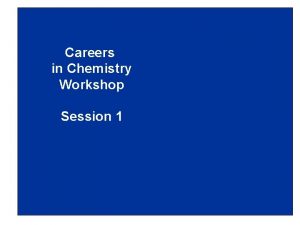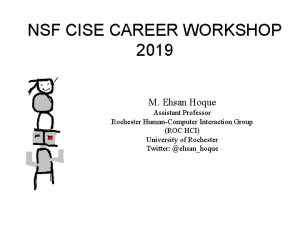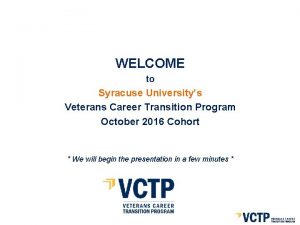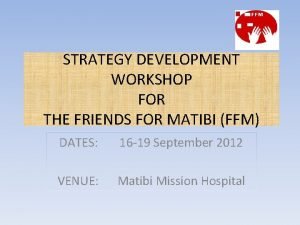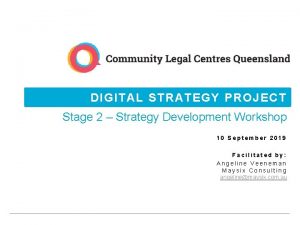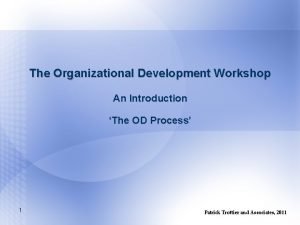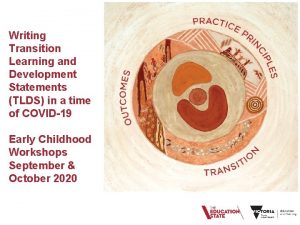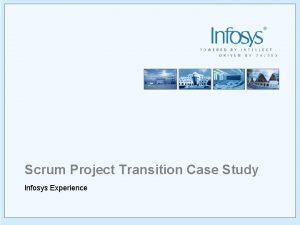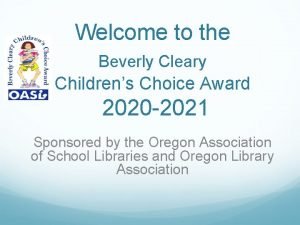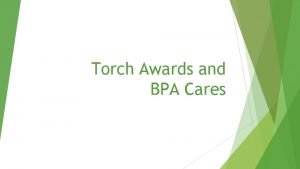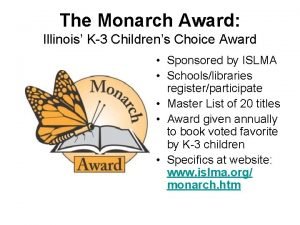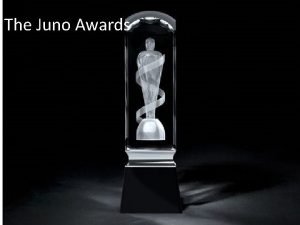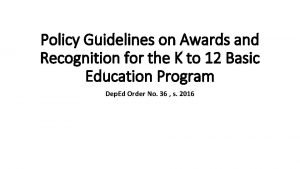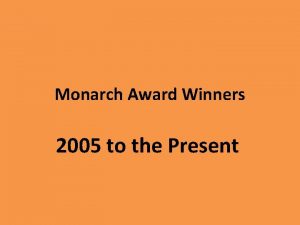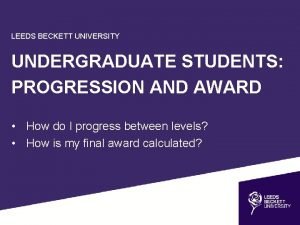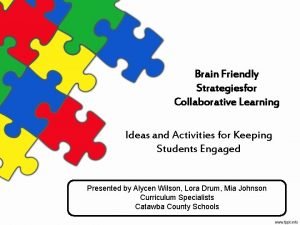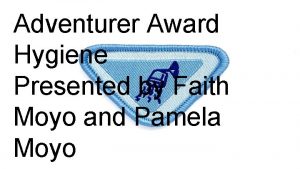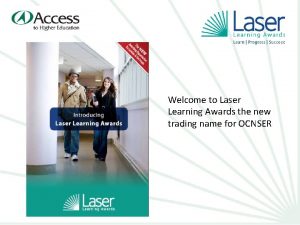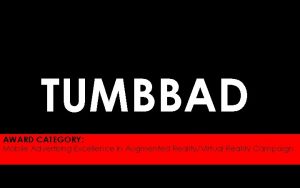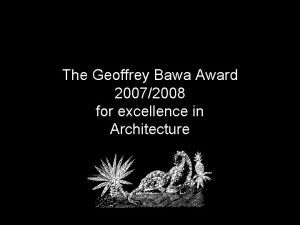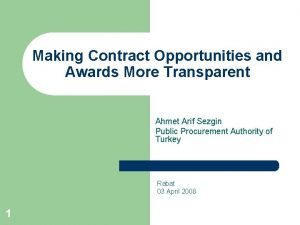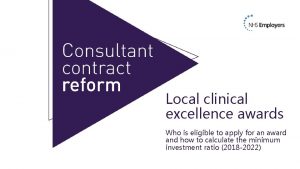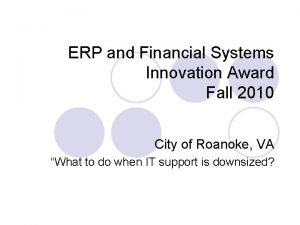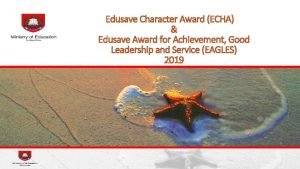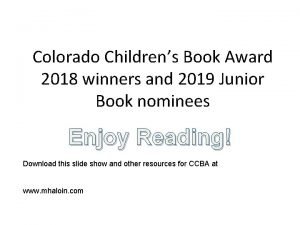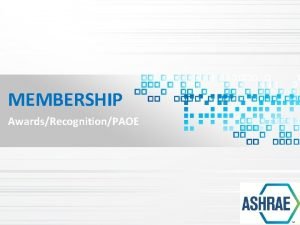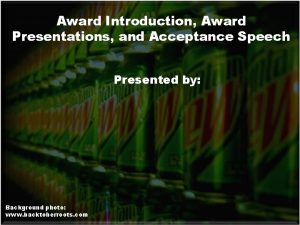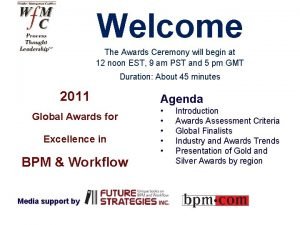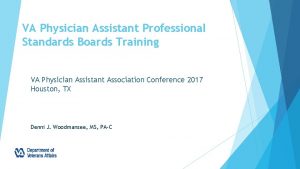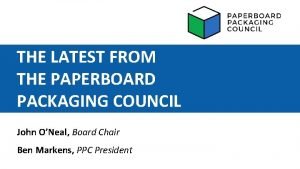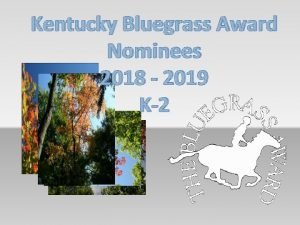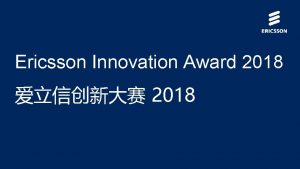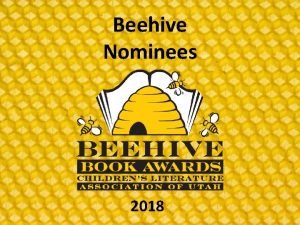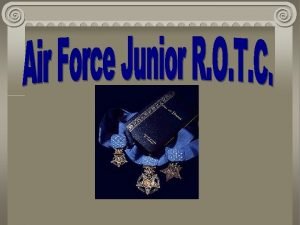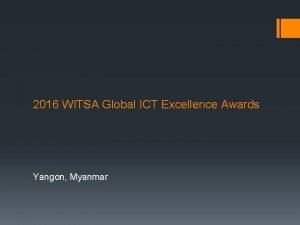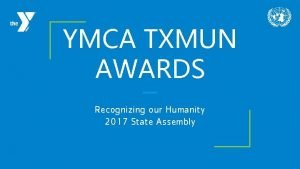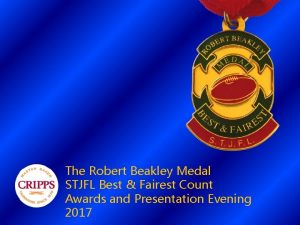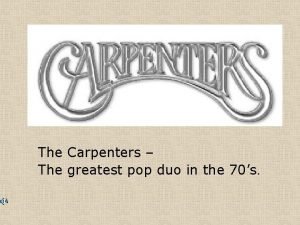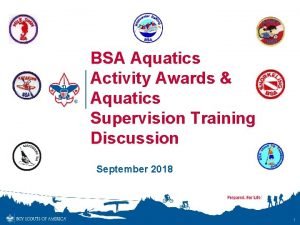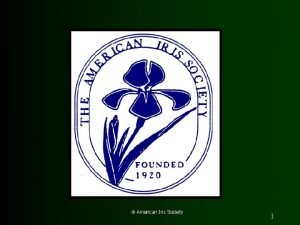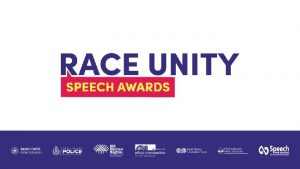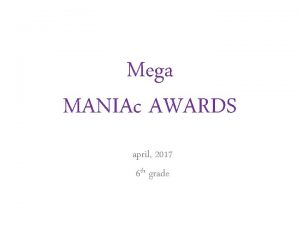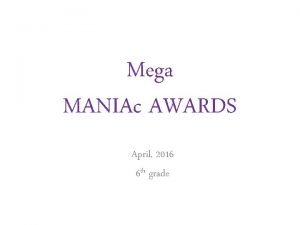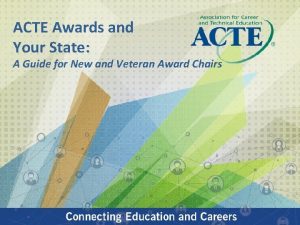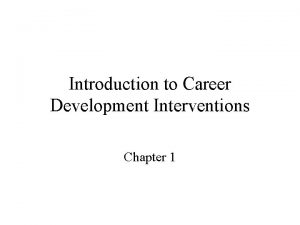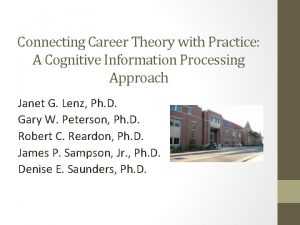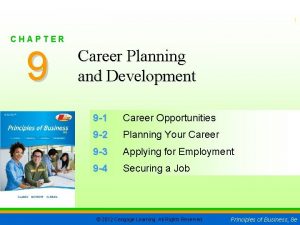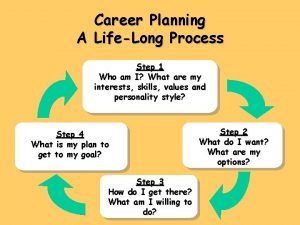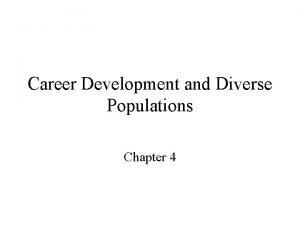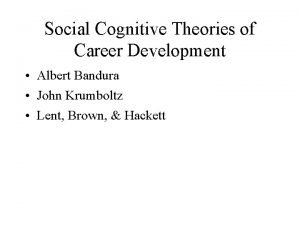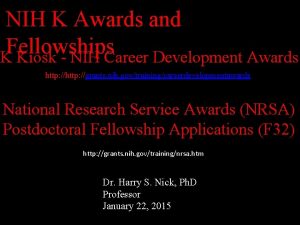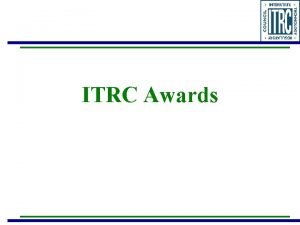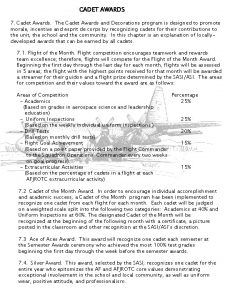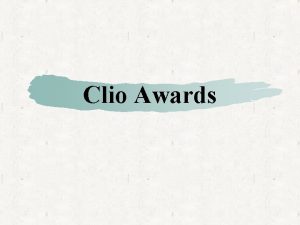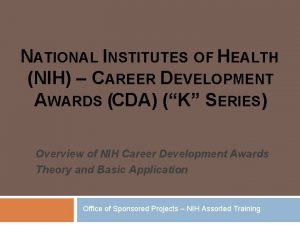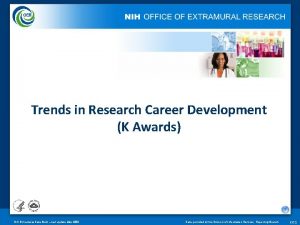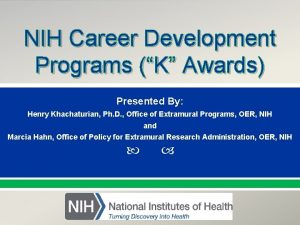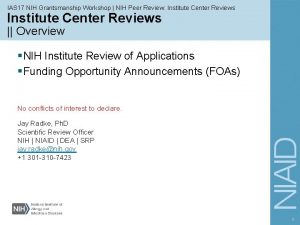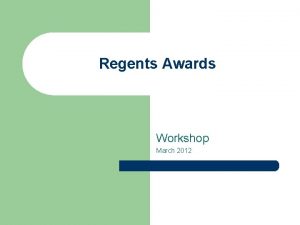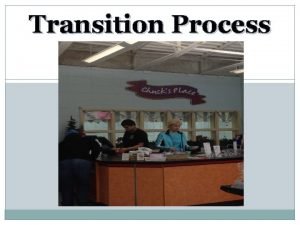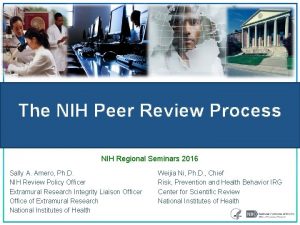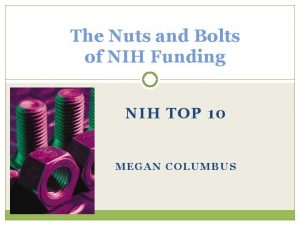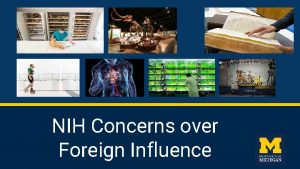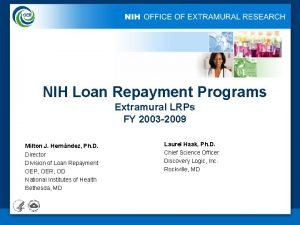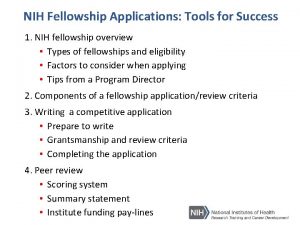NIH Career Development Awards Workshop NIH Career Transition







































































































- Slides: 103

NIH Career Development Awards Workshop NIH Career Transition Awards: Enabling Your Success Joan M. Lakoski, Ph. D. University of Pittsburgh Vanderbilt University Medical Center November 16, 2006

NIH Career Transition Awards GOAL: • To provide guidance on applications for NIH career development (“K”) awards of relevance to basic scientists, including the NIH Pathway to Independence (K 99/R 00) Award

Workshop Objectives By the completion of this session, participants should be able to • Choose the appropriate type of K Award for their career stage & situation. • Complete an application for a NIH career transition award. • Submit an application using strategies for a successful grant proposal.

Workshop Overview • • • Navigating NIH Inside the Study Section Process Anatomy of an Application 15 Steps to the Payline Questions & Discussion

NIH Career Transition Awards Understanding NIH http: //www. nih. gov/about/maps. html

Navigating NIH • Structure of NIH • Grant reviews • The Study Section Poster by L. Azzinaro http: //www. nih. gov/od/museum/exhibits/history/

National Institutes of Health (NIH) • Agency of the US Public Health Service • Mission: research, training, education • 19 Institutes + other components • Director: Elias Zahouni, M. D. • Budget (FY 06) = $28, 845 million

National Institutes of Health (NIH) Functional Divisions: Intramural Research Program – research within NIH Institutes: ~10% budget – administration & support: ~9% budget Extramural Research Program – external research & training: ~81% budget

NINDS — a typical Institute National Institute of Neurological Diseases & Stroke (NINDS) Advisory Council: – oversees institute Division of Intramural Research: – NINDS research labs in Bethesda Division of Extramural Research: – grants & contracts for external research

NINDS — a typical Institute Division of Extramural Research: • organized into Programs – each responsible for an area of research • Program Officers: – administer funded grants in their area Cultivating the interest and support of program officers is essential!

NIH — Extramural Support Research Project Grants (~50% budget): R 01: single investigator P 01: Program Project Other Types: Center Grants: 9% budget Contracts: 9% budget

NIH — Career Development Awards K Awards: • support for career development • ~ 2% budget: $624 million (FY 06) • wide range of types: – currently 14 (K 01 -K 99) • for clinicians & basic scientists • for junior & senior faculty

NIH: grant/career timeline student post doc resident junior faculty senior faculty training: F 31 F 32 K Awards (career dev) research: R 01 P 01

K Awards Why should you be interested? • K awards: – foster basic, clinical & patient-oriented research – provide partial funding for salaries

K Awards Success Rates: all K awards

K Awards For mentored career development: • clinicians: K 08, K 23, K 24 • basic scientists: K 01 For career transition: • basic scientists: K 02, K 22 • Pathway to Independence: K 99/R 00

NIH Grants: Information General: http: //www. nih. gov/grants/guide/index. html • search on mechanism of interest and applicable institute K Awards: “K kiosk” http: //grants 1. nih. gov/training/careerdevelopmentawards. htm

NIH Grants: Information Distribution of K Awards by NIH Institute Contact the appropriate Program Officer first!

K Awards Mentored career development: • development of junior faculty • dedicated mentor is essential for – successful application – successful outcome • clinicians & basic scientists

K Awards: for basic scientists Ph. D. Postdoc. Faculty —> K 01 K 02 Independent investigator Mentored Research Scientist Award Independent Scientist Award Career Transition K 22 Award

K Awards for basic scientists K 01: Mentored Research Scientist Award — career development in a new area of research • potential for productive independent research • mentor with extensive research experience • 75% effort over 3 -5 years • differences among Institutes images © 2002 www. arttoday. com

K Awards for basic scientists K 02: Independent Scientist Award — develop career of funded scientists • salary support for newly independent scientists • must have peer-reviewed research support • 75% effort for 5 years images © 2002 www. arttoday. com

K Awards for basic scientists K 22: Career Transition Award — support for postdoctoral fellows in transition to faculty positions • potential for productive independent research • differences among Institutes: may involve training in intramural NIH programs images © 2002 www. arttoday. com

K Awards for basic scientists Success rates:

NIH Career Transition Awards NIH Pathway to Independence (PI) Award Program (PA-06 -133) K 99/R 00 (Kangaroo) Award • Designed to facilitate receiving an R 01 award earlier in an investigator’s research career

First Major Independent Research Support Occurs at an Ever-Later Age Average Age of Initial Type 1 R 01/R 23/R 29 Award for Different Degrees Held 44 45 44 M. D. -Ph. D. 42 41 M. D. 40 40 Ph. D. 39 38 38 37 37 36 35 1980 1981 1982 1983 1984 1985 1986 1987 1988 1989 1990 1991 1992 1993 1994 1995 1996 1997 1998 1999 2000 2001 2002 2003 Fiscal Year For more information, see http: //grants. nih. gov/grants/20040712_New_Investigator_Talk. ppt Average 42 43

Developing a Successful K 99/R 00 Application Overall Goal of Initiative To facilitate a new investigator’s ability to transition from a postdoctoral status to an independent scientist capable of applying for an receiving their first R 01 and securing a stable research position

Facilitating the grant/career timeline student post doc resident junior faculty senior faculty training: F 31 research: F 32 K Awards (career dev) Combining the K and R R 01 P 01


K 99/R 00 Award • Provides up to five years of support consisting of two phases: – Initial 1 -2 years of mentored support for highly promising postdoctoral research scientists (K 99 Phase) – Followed by up to 3 years of independent support contingent on securing an independent research position (R 00 Phase)

Mentored (K 99) Phase • Will provide 1 -2 years for mentored support for highly promising postdoctoral research scientists who have terminal clinical or research doctorates • Total cost per year up to $90, 000 • This phase may be submitted on behalf of candidate by wide range, but not foreign institutions • U. S. citizens and non-U. S. citizens eligible

Independent Investigator (R 00) Phase • Transition from K 99 to R 00 (years 3 -5) is to be continuous in time • Activation of R 00 Phase requires offer and acceptance of a tenure-track, full time assistant professor position (or equivalent) • Transition is subject to administrative review of progress and evaluation of research plan

Independent Investigator (R 00) Phase • Application may be submitted on behalf of PI by universities etc but not Federal and foreign institutions • Total cost for independent investigator phase may not exceed $249, 000 per year • Institution must demonstrate commitment to candidate (minimum 75% effort, space, etc. ) • PI expected to apply for independent research grant support

Current Status of NIH Pathway to Independence Awards* • Number of applications received – April 7 = 445 – June 1 = 229 • Number of Awards Anticipated = 177 • Success rate = 40% * Excludes data from October 1 2006 submission deadline

Review Criteria: Mentored (K 99) Phase 1. Candidate 2. Career development plan 3. Research plan 4. Mentor 5. Environment & Institutional Commitment to the Candidate 6. Training in Responsible Conduct of Research 7. Letters of Reference and Mentor(s) statements 8. Plans to Evaluate Progress

Comparison of K 22 and K 99/R 00 Awards K 22 K 99/R 00 Transition Award (postdoc to faculty)? Yes Duration? Varies by IC NIH: 5 yrs U. S. Citizenship/ Green card? Required Not Required Mentored Phase Varies by IC 2 yr Independent Phase Varies by IC 3 yrs Awardee can go to foreign institution? No No Cost Varies by IC $90 K yrs 1 -2 (TC) $747 K yrs 3 -5 (TC) F & A Costs 8% Up to 50%


Know Your K: Navigating NIH • Structure of NIH • Grant reviews • The Study Section http: //www. csr. nih. gov/about. htm

The Grant Triangle Investigator application 1 6 funding Home Institution 2 Study NIH Section 5 3 Council 4 Program NIH Institute 1. an 2. 3. 4. 5. 6. aapplication the NIH application Institute home study institution is. Program section Council submitted is initiated reviews administers decides sends to&NIH prepared funding the whether through proposal the for byto an the & fund the grant investigator’s grant the for score grant the to the isinvestigator sent home to ainstitution NIH institution Institute

The Grant Review Process Important Concepts: • applications must be submitted from a recognized institution • each application has two independent reviews within NIH: “Dual Review” • funding goes to the investigator’s home institution not the investigator

The Grant Review Process Dual Review: 1. Study Section: • scientific merit • written review & score 2. Institute Council: • significance, programmatic merit • approval for funding

The Grant Review Process Center for Scientific Review (CSR): • independent unit within NIH – separate from Institutes • administers review panels (Study Sections) • receives & assigns applications: – to Study Sections for review – to Institutes for funding http: //www. csr. nih. gov/welcome. htm


Know Your K: Navigating NIH • Structure of NIH • Grant reviews • The Study Section images © 2002 www. arttoday. com • http: //www. csr. nih. gov/welcome. htm

The Study Section Members: – working scientists (~15 -20) – one member serves as Chair Scientific Review Administrator (SRA) – NIH (CSR) staff person – assigns grants to reviewers, collates reviews Meetings: – 1 -2 days, 3 times per year

The Study Section Assignments: – primary & secondary: written reviews – tertiary (“reader”): read & comment Review Criteria – defined for each application type Priority Scores: – scale: 100 (best) to 500 (worst)

Sequence of Review • moderated by Chair • reviewers indicate enthusiasm • primary & secondary reviewers present • tertiary reviewer comments • open discussion • members score application • SRA writes summary of discussion

Review Criteria: Mentored (K 99) Phase 1. Candidate 2. Career development plan 3. Research plan 4. Mentor 5. Environment & Institutional Commitment to the Candidate 6. Training in Responsible Conduct of Research 7. Letters of Reference and Mentor(s) statements 8. Plans to Evaluate Progress

The Next Steps Reviews: – collated by SRA & sent to Program Officer, who sends to applicant (“pink sheets”) Payline: – determined by funding available to Institute Council: – sets payline, approves grants for funding Funding: – Notice of Award sent to applicant



NIH Career Transition Awards Anatomy of an Application

Application Package: PHS 398 Download forms: http: //grants 1. nih. gov/grants/funding/phs 398. html – use for Oct 2006 & Feb 2007 deadlines – electronic submission: June 2007

Application Package: PHS 398 Instructions: – download from same source – includes additional instructions for K Awards Read the Instructions! Consult with an interested Program Offi Off

PHS 398: General Instructions Format: • single-sided, single-spaced • only material that can be photocopied – photographs etc —> Appendix • number pages consecutively • specific fonts & sizes required Applications that do not conform may be returned without review!

K Award Application: Face Page Candidate’s name Candidate’s signature

K Award Application: Page 2 Abstract: • career goals • development plan • research project

K Award Application: Page 2 (cont) Key Personnel: • candidate • mentor

K Award Application: Page 3 Table of Contents: • must use substitute page for K Awards • lists special information required for application

K Award Application: Two sections Section I. Basic Administrative Data Section II. Specialized Information

K Award Application: Page 5 Budget: • only complete page 5: budget for entire period • consult with Program Officer about allowed expenses • justify budget

K Award Application: Biosketch Must include: • Education • Research and/or professional exp. • Employment • Honors • Professional Societies • Publications

K Award Application: Other Support • biosketch for mentor must include list of research support relevant to candidate’s research plan

K Award Application: Resources • important to establish feasibility of candidate’s research project

K Award Application: Section II Specialized Information: • Candidate • Statement by Mentor • Environment & Institutional Commitment • Research Plan

Preparing a Successful K 99/R 00 Application • Write to the review criteria • Applicants are advised to distinguish the research components for the K 99 and R 00 phases: separate research projects (and specific aims) into 2 phases

Review Criteria: Mentored (K 99) Phase 1. Candidate 2. Career development plan 3. Research plan 4. Mentor 5. Environment & Institutional Commitment to the Candidate 6. Training in Responsible Conduct of Research 7. Letters of Reference and Mentor(s) statements 8. Plans to Evaluate Progress

K Award Application: Section II The Candidate: • Candidate’s Background — additional information not in biosketch • Career Goals & Objectives —“Scientific Biography” — how training will fit career development • Career Development/Training Activities — new skills & knowledge to be learned — must include training in Responsible Conduct in Research (RCR)

K Award Application: Section II Statement(s) by Sponsor/Mentor: • Description of Training Program — include activities other than research — sponsor’s experience as mentor — concurrent responsibilities — assurance of release from duties — source of support for research project • List other collaborators, consultants — letters from each

K Award Application: Section II Environment & Institutional Commitment: • Description of Institutional Environment — strong relevant research program — availability of resources — intellectual interactions • Institutional Commitment — adequate support from institution — adequate resources — commitment to candidate

K Award Application: Section II Institutional Commitment: • The applicant organization must agree to — release the candidate from other duties to devote the required effort to the program — provide the candidate with appropriate resources (lab, office, equipment etc) — provide time & support for the sponsor • Agreement must be signed by appropriate Institutional Official

K Award Application: Section II Research Plan: • Statement of Hypothesis & Specific Aims • Background, Significance & Rationale • Preliminary Studies & Any Results • Research Design & Methods

Crafting a Successful Proposal Communication! • • Why is this study important? Are the experiments feasible? What will be accomplished? How will it change the field? Keep it simple, concise & logical!

Crafting a Successful Proposal Communicate to your audience:

Crafting a Successful Proposal Design a clear experimental plan: • • • have a clearly stated, testable hypothesis keep the proposal focused indicate outcomes: outcomes what will you learn? anticipate pitfalls; pitfalls outline alternatives provide a timeline: timeline limit the experiments to what can be accomplished within the time period

K Award Application Reference Letters: • required for K 01, K 08, K 22, K 23 and K 99 (mentored) applications • three (3) letters from individuals other than those involved in the application — i. e. , not sponsor/mentor or collaborators • should address candidate’s competence & potential as an independent investigator

K Award Applications Reference Letters: • new guidelines include form letter to request letters of reference

Tips for Best Reference Letters • develop effective working relationships with potential referees • keep your referees updated on your progress • make your referees’ job easy, provide: – current CV, reprints – draft of proposal Remember: this is a personal & professional relationship that may last your entire career

K Award Application: Appendix can include: • material that cannot be photocopied • up to 6 reprints or preprints of papers • need 5 collated sets Assume that reviewers may NOT read appendix material!

K Award Application: Submission Application package must include: • original application, with required signatures • 5 exact copies (single-sided) of the complete application • at least 3 sealed letters of reference • 5 collated sets of appendix material

K Award Application: Submission Deadlines & Review Cycles: Receipt Review Council Start Feb 1 June-July Sept-Oct December June 1 Oct-Nov Jan-Feb April October 1 Jan-Feb May-June July • applications must be received by or mailed on or before the receipt date • proof of mailing: postmark or dated receipt from mail carrier

Electronic Grant Submission • fully electronic submission process – through Grants. gov website • being phased in: – February 2007: R 01 – June 2007: K awards – August 2007: Fellowship Awards • for more information see: http: //era. nih. gov/Electronic. Receipt/

Review Criteria: Mentored (K 99) Phase 1. Candidate 2. Career development plan 3. Research plan 4. Mentor 5. Environment & Institutional Commitment to the Candidate 6. Training in Responsible Conduct of Research 7. Letters of Reference and Mentor(s) statements 8. Plans to Evaluate Progress


NIH Career Transition Awards 15 Steps to the Payline images © 2002 www. arttoday. com

15 Steps to the Payline Step 1 Start the Application • An Idea • A Mentor • An Institution

15 Steps to the Payline Step 2 Have the Right Attitude images © 2002 www. arttoday. com

15 Steps to the Payline Step 3 Find Information & Make Connections

15 Steps to the Payline Step 4 Frame the Question Specific Aims A Testable Hypothesis

15 Steps to the Payline Step 5 Define the Goals Research & Training Programs What you’ll accomplish What you’ll learn

15 Steps to the Payline Step 6 Contact References

15 Steps to the Payline Step 7 Stock the Reservoirs Specific Aims Background & Significance Experimental Plan

15 Steps to the Payline Step 8 Write the First Draft images © 2002 www. arttoday. com

15 Steps to the Payline Step 9 Build a Model Specific Aim # 1 Specific Aim # 2 Specific Aim # 3 from Dazzle’Em With Style Robert Anholt

15 Steps to the Payline Step 10 Get Feedback Mentor Student Applicant Advisor Colleague Faculty

15 Steps to the Payline Step 11 Comply with the Regulations Assurances/Certifications • Human Subjects • Animal Welfare • • “Blue Sheet”

15 Steps to the Payline Step 12 Manage your Mentor Sponsor’s Checklist X Mentor’s Statement X Environment & Institution X Feedback on draft

15 Steps to the Payline Step 13 Proof & Check

15 Steps to the Payline Step 14 Submit the Proposal http: //www. fedex. com/us/about/justforyou/journalists/photos. html

15 Steps to the Payline Step 15 Move Forward Reject The Decision Reapply Funded

K Awards: Review Criteria 1. Candidate 2. Career development plan 3. Research plan 4. Mentor 5. Environment & Institutional commitment 6. Budget

15 Steps to the Payline Checklist:

NIH Career Transition Awards Acknowledgements: Dr. Robert J. Milner Office of Professional Development Penn State College of Medicine The Office of Academic Career Development University of Pittsburgh Schools of the Health Sciences
 Cra career mentoring workshop
Cra career mentoring workshop Career workshop objectives
Career workshop objectives Proposal writing on career guidance workshop
Proposal writing on career guidance workshop Career guidance presentation
Career guidance presentation Cise career workshop
Cise career workshop Proposal writing on career guidance workshop
Proposal writing on career guidance workshop Syracuse veterans career transition program
Syracuse veterans career transition program Strategy development workshop
Strategy development workshop Strategy development workshop
Strategy development workshop Business development workshop
Business development workshop Patrick trottier
Patrick trottier Transition learning and development statement examples
Transition learning and development statement examples Software development project transition
Software development project transition Fcs launchpad
Fcs launchpad Formulas for career success
Formulas for career success Beverly cleary children's choice award
Beverly cleary children's choice award Torch awards bpa
Torch awards bpa Monarch awards 2006
Monarch awards 2006 What are the juno awards named after
What are the juno awards named after The boy in the striped pajamas theme
The boy in the striped pajamas theme Sap innovation awards 2019
Sap innovation awards 2019 Rudyard kipling awards
Rudyard kipling awards Deped order no. 36, s. 2016
Deped order no. 36, s. 2016 Monarch awards 2006
Monarch awards 2006 Mcube awards
Mcube awards Leo lionni awards
Leo lionni awards Leo lionni awards
Leo lionni awards Leeds beckett university awards
Leeds beckett university awards Jeanne duprau facts
Jeanne duprau facts How to get marketo certification
How to get marketo certification David shannon writer
David shannon writer Chris van allsburg biography
Chris van allsburg biography Paper plate awards ideas list
Paper plate awards ideas list Hygiene award
Hygiene award Xxl magazine awards
Xxl magazine awards Bucks laser learning
Bucks laser learning Tumbbad awards
Tumbbad awards Geoffrey bawa awards
Geoffrey bawa awards Transparent awards
Transparent awards Local clinical excellence awards 2020
Local clinical excellence awards 2020 Erp innovation awards
Erp innovation awards Echa award money
Echa award money Dr. mark dean
Dr. mark dean Junior book awards 2018
Junior book awards 2018 Britney spears real name
Britney spears real name Kristianne gates
Kristianne gates Awards recognition concepts
Awards recognition concepts Award introduction speech
Award introduction speech Welcome to awards ceremony
Welcome to awards ceremony Va handbook 5017 employee recognition and awards
Va handbook 5017 employee recognition and awards Paperboard packaging council
Paperboard packaging council Pitch deck analyzer
Pitch deck analyzer Sap innovation awards 2019
Sap innovation awards 2019 Sap best run awards
Sap best run awards Major consumer promotion tools
Major consumer promotion tools Human becoming theory symbol
Human becoming theory symbol Otto wichterle born
Otto wichterle born Kentucky bluegrass awards
Kentucky bluegrass awards Ericsson innovation awards 2018
Ericsson innovation awards 2018 Book scavenger by jennifer chambliss bertman
Book scavenger by jennifer chambliss bertman Longevity ribbon jrotc
Longevity ribbon jrotc Cadet humanitarian award
Cadet humanitarian award Witsa global ict excellence awards
Witsa global ict excellence awards Ymca awards
Ymca awards Beakley medal
Beakley medal Mary kay cosmetics mission statement
Mary kay cosmetics mission statement Library interior design awards
Library interior design awards The carpenters awards
The carpenters awards Mary seacole awards
Mary seacole awards Laura numeroff awards
Laura numeroff awards Hereby awarded
Hereby awarded Bsa aquatics awards
Bsa aquatics awards American iris society awards
American iris society awards Frw awards
Frw awards Unity speech to text
Unity speech to text Sap innovation awards
Sap innovation awards Sap innovation awards 2020
Sap innovation awards 2020 Qub teaching awards
Qub teaching awards Musiikki & media industry awards
Musiikki & media industry awards Life is beautiful oscar
Life is beautiful oscar Imc awards 2020
Imc awards 2020 Acm awards
Acm awards Supertunia mulberry charm
Supertunia mulberry charm Eal awards
Eal awards Is rammstein still together
Is rammstein still together Sap innovation awards 2019
Sap innovation awards 2019 Sap innovation awards 2019
Sap innovation awards 2019 Sap innovation awards 2020
Sap innovation awards 2020 Patricia polacco biography
Patricia polacco biography Sarah snyder mega
Sarah snyder mega Andrew naoum
Andrew naoum European quality awards
European quality awards Global quality awards
Global quality awards Awards recognition concepts
Awards recognition concepts Acte awards portal
Acte awards portal Awards recognition concepts
Awards recognition concepts Australian blueprint for career development
Australian blueprint for career development Mrc skills development fellowship
Mrc skills development fellowship Introduction to career development
Introduction to career development Qanxiety
Qanxiety Chapter 9 career planning and development
Chapter 9 career planning and development Career development is a lifelong process
Career development is a lifelong process Career development of diverse populations
Career development of diverse populations John krumboltz social learning theory
John krumboltz social learning theory
